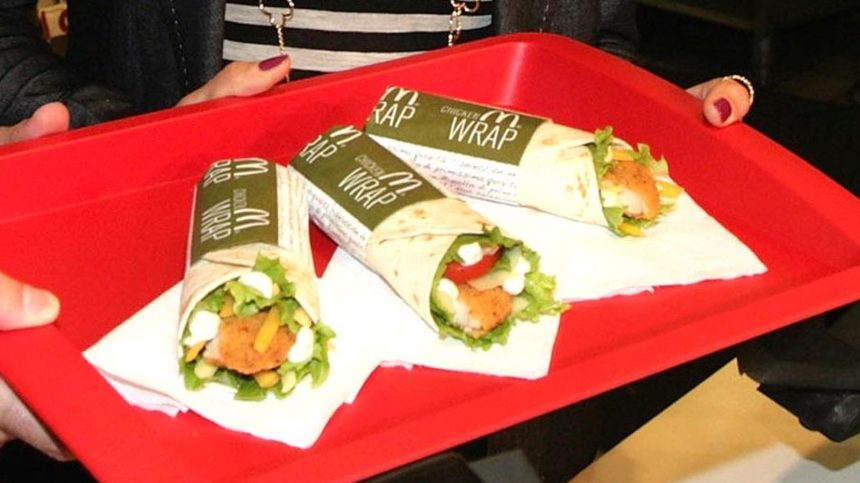The resurrection of the McDonald’s Snack Wrap, a menu item cherished by a devoted fan base, is slated for 2025. This announcement comes after nearly a decade of absence from most McDonald’s menus, a period marked by persistent campaigns and petitions from loyal customers yearning for its return. McDonald’s President Joe Erlinger acknowledged the “cult following” of the Snack Wrap, highlighting the numerous emails he receives about the discontinued item. The Snack Wrap, which originally featured variations of chicken, lettuce, and cheese nestled in a warm tortilla, became a fast-food favorite after its launch in 2006. While the exact date of its return remains undisclosed, the anticipation is palpable among those who fondly remember its convenient and flavorful profile.
The Snack Wrap’s journey has been marked by both popularity and operational challenges. Initially launched with a marketing campaign featuring supermodel Heidi Klum, it later expanded to include beef options. However, its tenure on the menu was ultimately cut short due to a combination of factors, including lower-than-expected sales and complexities in its preparation. Franchisees reportedly struggled with the time-consuming process of steaming the tortilla, chopping the chicken, and assembling the multiple variations of the wrap, leading to inconsistencies and longer customer wait times. These operational hurdles ultimately contributed to the Snack Wrap’s removal from most menus in 2016, with all remaining franchises discontinuing it by 2020.
Despite its disappearance, the Snack Wrap maintained a dedicated following who tirelessly advocated for its return. Online petitions garnered thousands of signatures, and social media campaigns, including one featuring the Slim Jim account, kept the desire for the Snack Wrap alive in the public consciousness. The fervor even reached celebrity circles, with fans urging rapper Doja Cat to champion their cause following her successful campaign to reinstate the Taco Bell Mexican Pizza. This persistent consumer demand, coupled with the nostalgia surrounding the Snack Wrap, ultimately influenced McDonald’s decision to bring back the beloved menu item.
The Snack Wrap’s revival aligns with McDonald’s history of responding to customer demand by reintroducing discontinued favorites. The McRib, a barbecue-flavored pork sandwich, has experienced a similar trajectory of farewell tours and intermittent returns, demonstrating the company’s willingness to capitalize on nostalgic cravings. Other resurrected items include the Cheese Danish, absent for decades before its limited-time reappearance, and the holiday pie, a festive treat that periodically graces the menu. These examples illustrate McDonald’s strategic approach to leveraging customer sentiment and driving sales by bringing back popular items.
The impending return of the Snack Wrap also coincides with ambitious expansion plans for McDonald’s. The company aims to open 10,000 new restaurants by 2027, representing the fastest growth period in the brand’s history. This expansion, coupled with the reintroduction of popular menu items like the Snack Wrap, underscores McDonald’s focus on both attracting new customers and re-engaging its existing base. With over 14,300 restaurants in the United States and a global presence exceeding 36,500 locations in over 100 countries, McDonald’s continues to dominate the fast-food landscape.
Alongside the positive news of the Snack Wrap’s comeback, McDonald’s recently addressed a food safety incident involving an E. coli outbreak linked to onions used on its Quarter Pounders. The outbreak, which sickened over 100 people, prompted a temporary halt in Quarter Pounder sales and a voluntary recall of onions by supplier Taylor Farms. McDonald’s President Joe Erlinger publicly apologized for the incident, expressing regret for the harm caused to customers. The CDC has since declared the outbreak over, assuring the public that McDonald’s products are safe to consume. This incident highlights the challenges faced by large food chains in maintaining supply chain integrity and ensuring the safety of their products.



